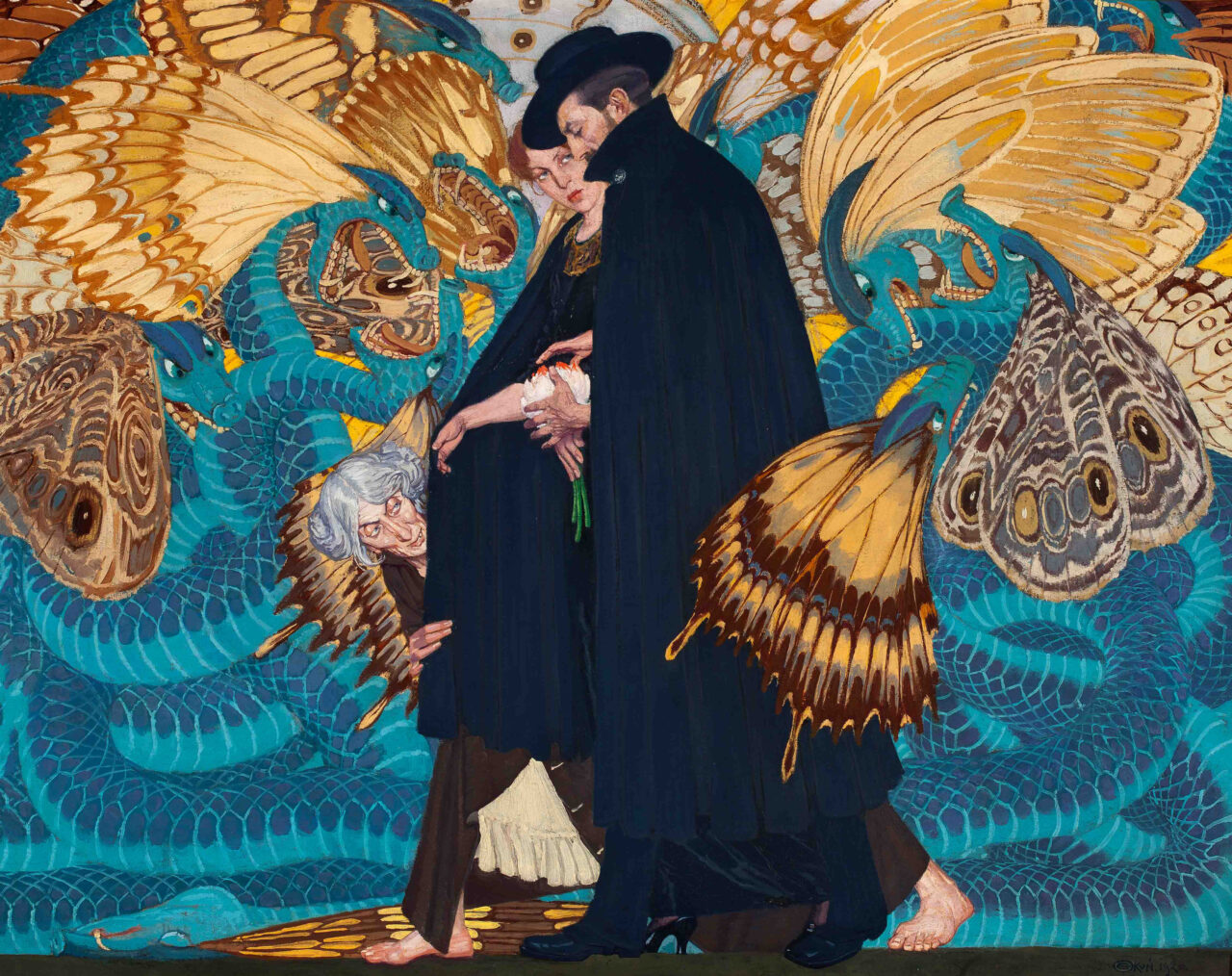1917
1917 was a monumental year in the shaping of the world thereafter, and Poland especially (which wasn't its own country at that point). It saw the US enter The Great War against Germany, and the Russian monarchy falling to Socialist Rebels after 2 separate rebellions in February and October.
Poland, positioned between Austria-Hungary, the German Empire and the Russian Empire, made it a site of great human loss. However, each of these suitors, believing an alliance would give an advantage, wooed the regions leaders.
Art Nouveau being in vogue at the time influenced the animal shapes. What at first appears to be butterfly wings and random decor, is actually serpents biting and killing each other.
Here's some info about the art period and artist:
Młoda Polska
Młoda Polska was a modernist period in Polish visual arts, music and literature, which spanned the period from 1890 to 1918.
According to the organisers, the end of the 19th century was a time when “the concepts of freedom and hope were important themes in Polish culture and art. Elements of symbolism, neo romanticism and early modernism created a unique and expressive atmosphere and art movement, with Kraków and Warsaw as important cultural centres.”
Art Nouveau
An international style of art, architecture, and applied art, especially the decorative arts. It was often inspired by natural forms such as the sinuous curves of plants and flowers.[1] Other characteristics of Art Nouveau were a sense of dynamism and movement, often given by asymmetry or whiplash lines, and the use of modern materials, particularly iron, glass, ceramics and later concrete, to create unusual forms and larger open spaces.[2] It was popular between 1890 and 1910 during the Belle Époque period,[3] and was a reaction against the academic art, eclecticism and historicism of 19th century architecture and decoration.
The Artist
Okuń was born in 1872 to a noble family and was orphaned early. He grew up with his grandparents on the maternal side. After inheriting a large fortune, he soon began drawing lessons with great painters. In 1891 he studied at the Warsaw School of Drawing. From 1891 to 1893 he studied under the direction of Isidore Jablonski and Jan Matejko at the Jan Matejko Academy of Fine Arts. He continued his studies in Munich and Paris. In 1897 Okuń went to study with Simon Hollósy who founded the Nagybánya artists' colony. For the next 20 years he lived in Rome and also traveled to Sorrento, Amalfi, Capri, Venice, Padua, Ravenna, Florence and Siena. He participated in the life of the Polish art colony in Rome, and was co-founder of the Masonic lodge "Polonia".[citation needed]
Okuń returned to Poland in 1921 and settled in Warsaw. From 1925 he was a professor in the School of Fine Arts. He was a member of the Society of Polish Artists. Together with his friends founded a Masonic lodge called "Copernicus". He was vice-president of the Society for the Encouragement of Fine Arts. During the annual opening of the Salon Incentives he witnessed the assassination of the first president of Poland, Gabriel Narutowicz, by Eligiusz Niewiadomski. He helped apprehend Niewiadomski, along with one of the president's aides.
During World War II he lived in Warsaw. After the Warsaw Uprising Okuń moved to Skierniewice, where he was killed by stray bullet in January 1945.

Great post, interesting and informative!